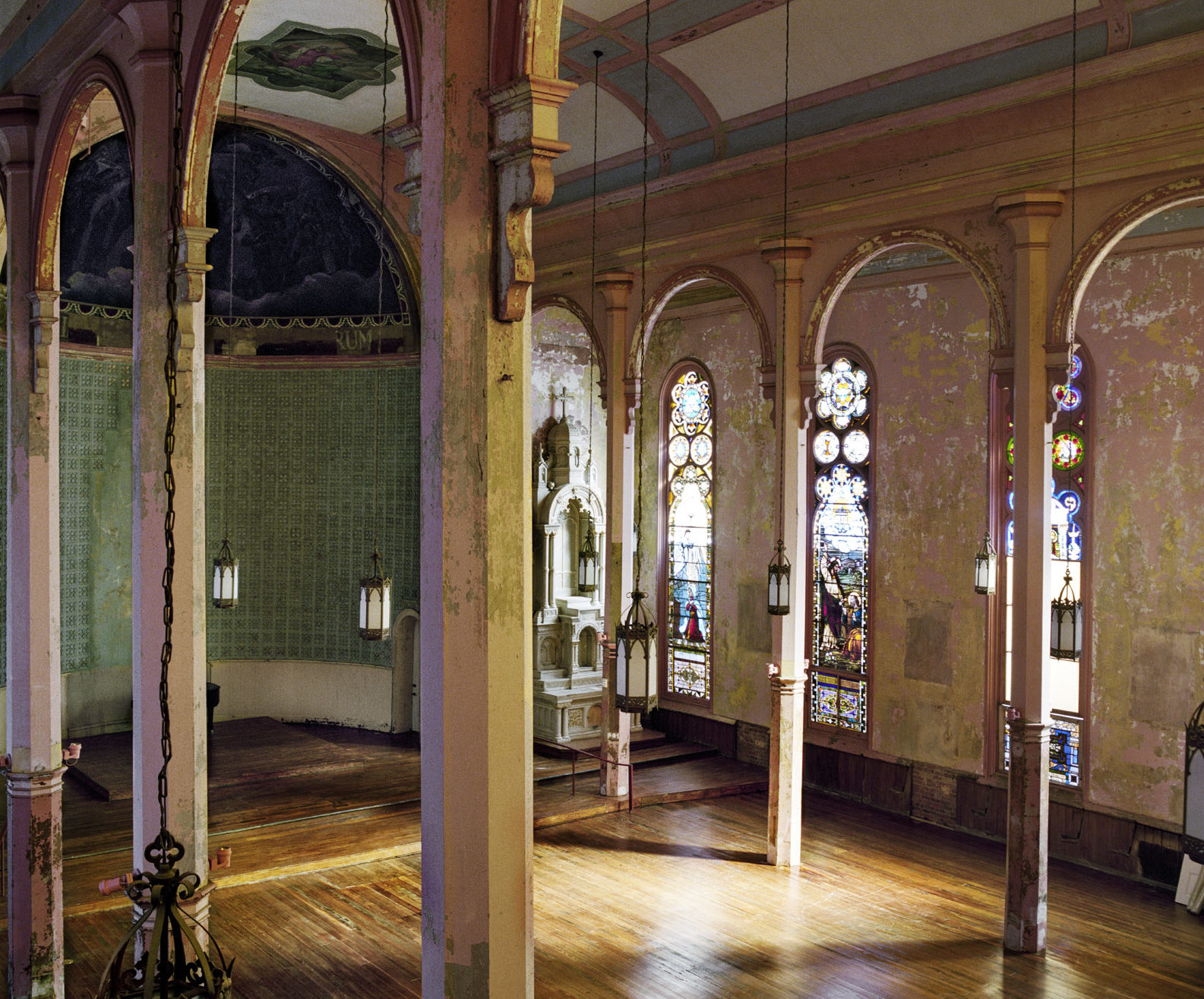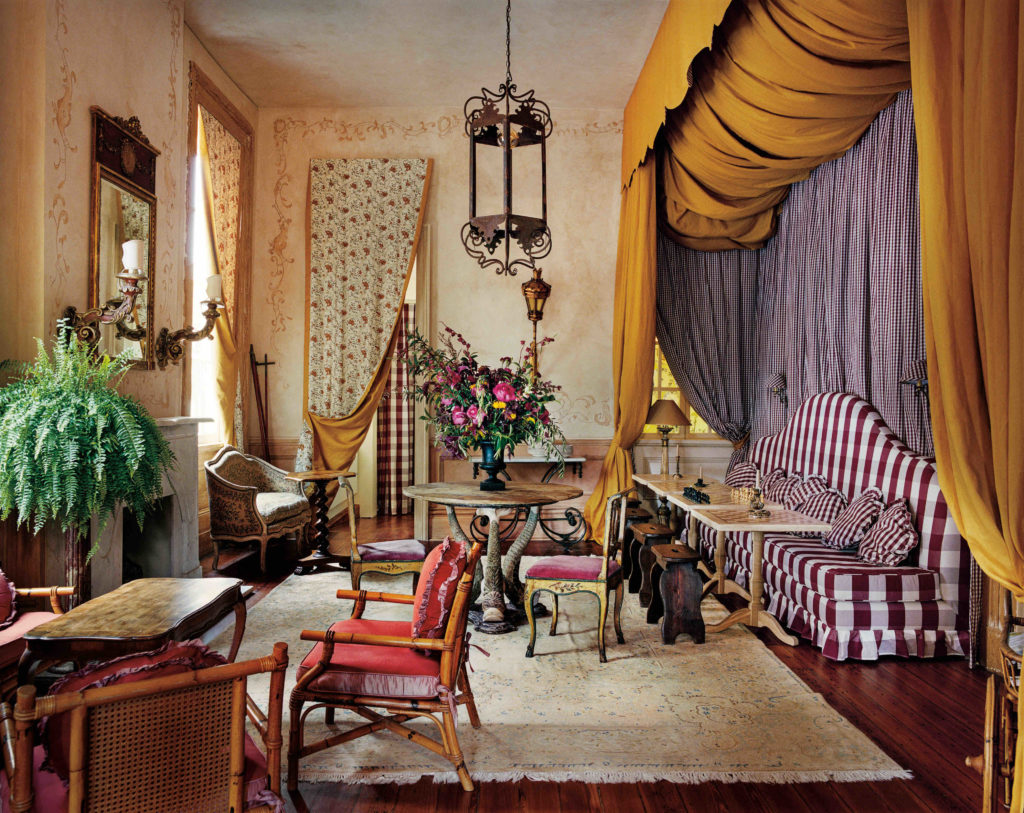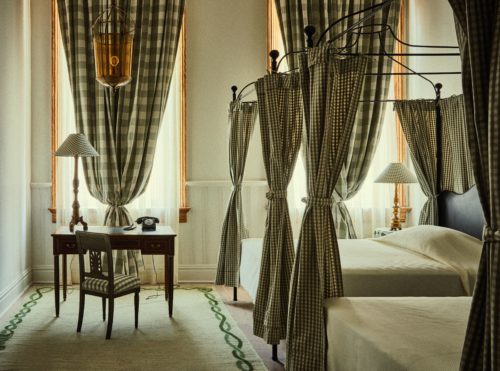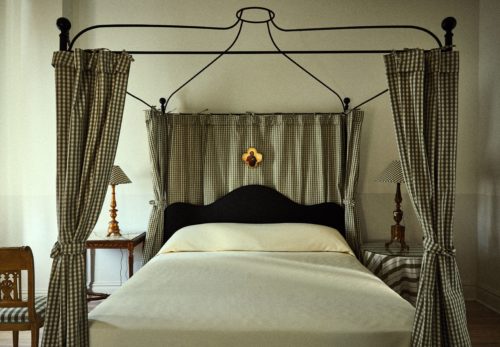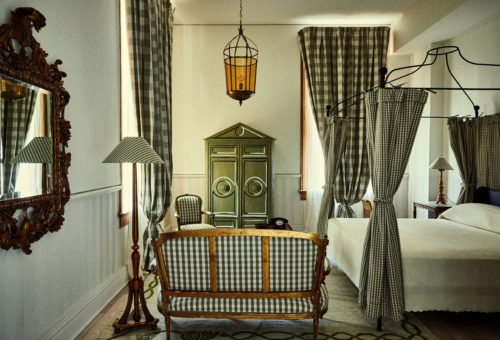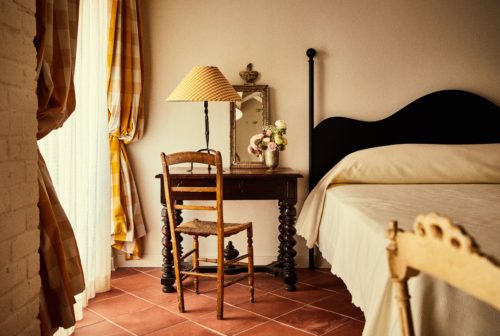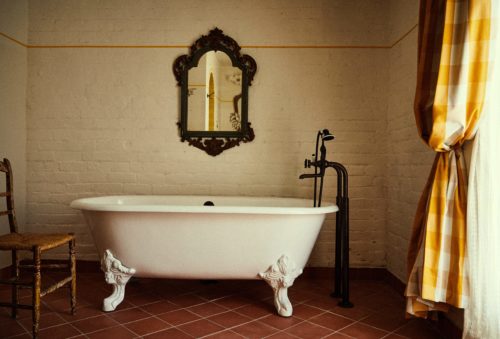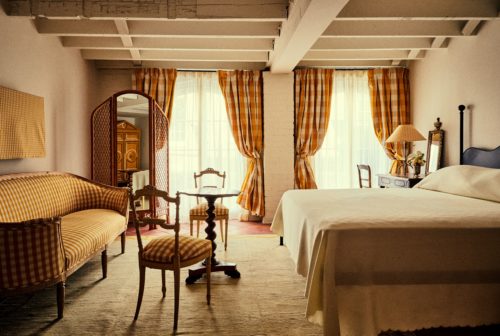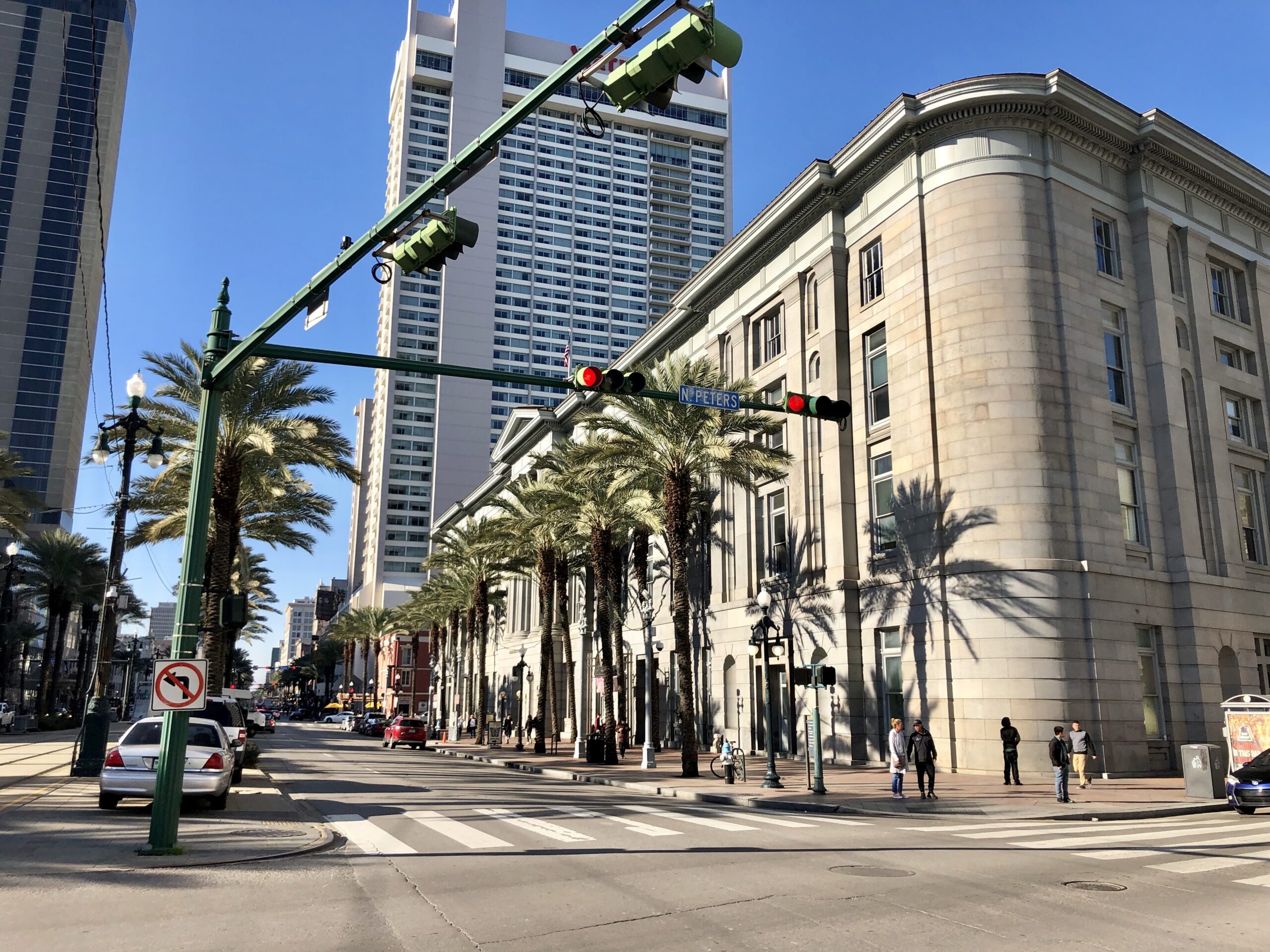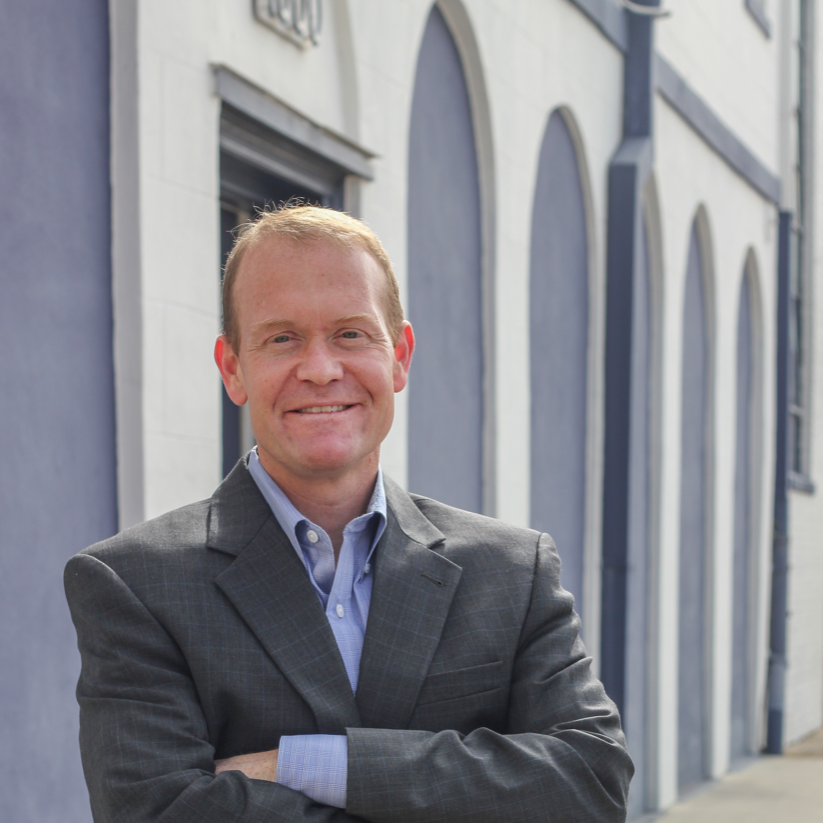This story will be featured in the February issue of the PRC’s Preservation in Print magazine. Interested in getting more preservation stories like this delivered to your door monthly? Become a member of the PRC for a subscription!
When Nathalie Jordi first stepped inside Sts. Peter and Paul Catholic Church, it had been closed for more than a decade. In the Faubourg Marigny, the property was a forlorn landmark, sitting dark and shuttered in the middle of a bustling neighborhood glowing with new restaurants, hip bars and scads of residential renovations.
Comprising four historic buildings filling an entire city block, the church and school campus was ripe for redevelopment. Jordi, a New Orleans-based journalist and entrepreneur, envisioned opening a small hotel in the neighborhood. The Sts. Peter & Paul property was perfect — but problematic. The size was daunting; it would require a zoning change; and all four buildings were built at different times for different uses. The school, for example, had children’s lavatories, whereas a hotel would need bathrooms in every guest room.
“I thought, ‘This is amazing, but it’s not going to work,” said Jordi who lives four blocks away from the church. “I initially put our prospects for success at 3 percent.”
Six years later, Sts. Peter and Paul Catholic Church, school, rectory and convent at 2317 Burgundy St. have been transformed into the Marigny’s newest and most sophisticated hotel, bar and event space.
Hotel Peter & Paul’s journey from vision to completion is a lesson in Sisyphean persistence — particularly in the face of a local bank failure that upended the development’s initial construction financing.
Advertisement
In the $22 million project — developed by Jordi in partnership with ASH NYC, a Brooklyn-based real estate development and design firm — the four historic buildings each have been meticulously renovated and adapted for new uses. StudioWTA was the architecture firm, and Palmisano was the contractor.
The former school house now features the hotel’s reception, lounge and 59 guest rooms; the rectory houses the Elysian Bar, courtyard and five guest rooms; and the convent has seven guest rooms.
The stunning heart of the complex is the 9,450-square-foot brown brick church, designed by acclaimed 19th century Irish-born architect Henry Howard. Now an event space, the towering structure, built circa 1860, retains its sacred aura, with saints gazing down from the stained glass windows and angels soaring in the restored murals over the former altar space. Even the original bell remains in the bell tower.
“The light in there is just incredible,” Jordi said. “Even though it’s been deconsecrated, it still feels holy, and I hope it always does.”
Originally built to minister to Irish Catholics in the area, the church was deconsecrated by the Archdiocese of New Orleans in 2000 during a parish consolidation. The rectory was built circa 1875, while the elementary school, designed by Diboll & Owen, was built in 1900. The 1890 convent was the former home of the Marianite Sisters of the Holy Cross who taught at the school, which closed in 1993 amid declining enrollment.
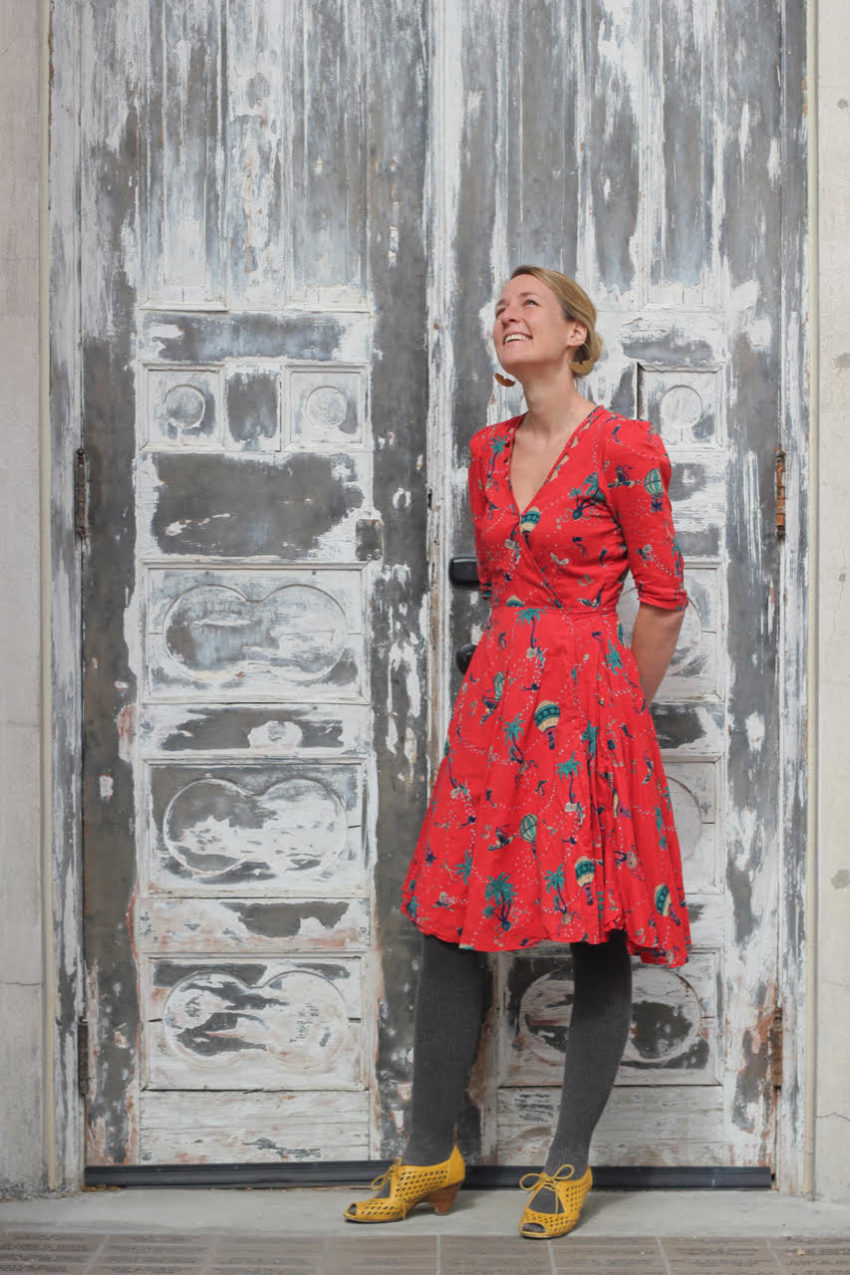
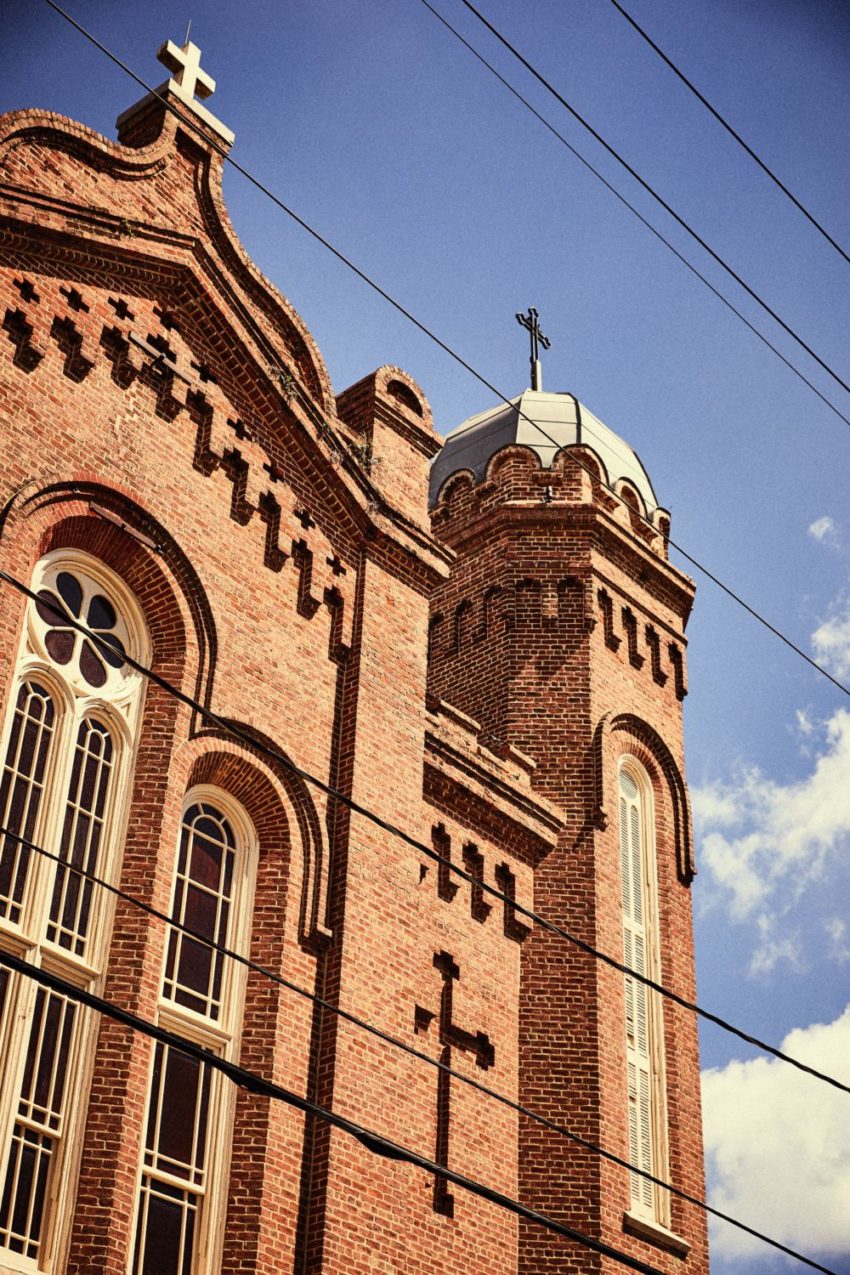
Nathalie Jordi stands in front of the circa-1860 former Catholic church, now the stunning heart of the Hotel Peter & Paul complex.
Photo 1 by Liz Jurey, photo 2 courtesy Hotel Peter & Paul
COFFEE SHOP CONVERSATIONS
Some developers start with big dreams that shrink down to realistic expectations. Jordi’s vision went in the opposite direction. Born in Miami of a Swiss father and Belgian mother, she speaks four languages and had traveled the world writing for Bon Appetit, Travel & Leisure and Conde Nast Traveler, among other publications. When she moved to New Orleans in 2009, she dreamed of opening a small hotel in the Marigny where she lived.
Exploring other properties, particularly ones already zoned for a hotel, she’d bring along architects from studioWTA and do her due diligence. Meanwhile, the Sts. Peter and Paul complex was right there, but not really in the picture. “It almost faded from view,” she said. “It was this big monolith” — far too big to be a realistic project.
When she began exploring a partnership with ASH NYC, Jordi and ASH partner Ari Heckman toured Peter & Paul. Walking around the property, it was clear this was the spot. “It was this big grand architecture that gave us beautiful bones to work with,” said Will Cooper, another partner and chief creative officer of ASH NYC.
In Providence, Rhode Island, ASH NYC had just completed the renovation and opening of The Dean, a chic 52-room hotel housed in a 1912 building that had once been a home for clergy but later became a brothel and strip club. (Since then, the firm also has completed the transformation of a 1926 building in Detroit, Mich., into the Siren Hotel.)
Advertisement
Peter & Paul was a bigger, more complex project. Even before buying the property, the first item on the developers’ to-do list was to secure a zoning change to allow for a hotel.
Jordi, from the start, engaged the neighbors. In 2014, she approached the Faubourg Marigny Improvement Association (FMIA). “I went to them and said, ‘There will be no demolition of existing buildings, no new buildings, and the facades will be exactly the same,’ ” Jordi recalled.
“That was music to our ears,” said Lisa Suarez, a longtime member and past president of the FMIA.
“At its heart, we’re a preservationist organization,” added Allen Johnson, current president of the FMIA. “Saving all of the buildings on the property was key to our support.”
Hotel Peter & Paul’s application to the City Planning Commission also was blunt about the project’s benefits to the city as compared to short-term rentals, which had proliferated in the neighborhood. “This is a taxpaying, insured, regulated, legal and safe alternative to the Airbnb epidemic in the Marigny,” the original application said, as reported by NOLA.com|The Times-Picayune.
As the project moved through the city zoning process, Jordi also set up an informal listening post in the Who Dat Coffee Café, an eatery across the street from Peter & Paul. Pregnant with her first son, she’d pop open her computer and invite residents to stop in and chat. “I had 70 something conversations there over six months,” she said.
Even more conversations continued online, as Jordi frequently wrote progress reports for FMIA’s newsletter, Les Amis de Marigny, published a blog, and then migrated the updates over to Nextdoor.com as the portal became residents’ main online billboard.
“She made herself very available; everyone had her phone number,” said architect Tracie Ashe, sudioWTA’s project manager for Hotel Peter & Paul. “That was a lot of responsibility and stress she took on herself. Not a lot of developers want to do that.”
While her partners had experience developing hotels, Jordi did not. But she had journalistic instincts. She researched and listened. Both paid off when the FMIA unanimously voted to support the hotel development.
Earning her neighbors’ vote of confidence was “one of the most incredibly gratifying moments,” Jordi said.
“You cannot do a project this big without inconveniencing the neighbors, ” Johnson said. “But every step of the way, Nathalie kept everyone informed. She realized the neighborhood could be her biggest champions.”
As the paperwork was spinning through the legal processes, Jordi also was doing on-the-road market research. The graduate of Brown and Tulane universities spent a summer driving an Uber, picking up passengers at the city’s chicest hotels and chatting them up about their stays.
Advertisement
RISK AND REWARD
Zoning wouldn’t be the only hurdle for Peter & Paul. The project, in 2016, got the good news that First NBC would provide a construction loan. Before the bank could cut the developers a check, though, First NBC ran into its own financial problems, halting the hotel’s financing. The developers were back to square one. “It delayed everything,” Jordi said.
In the end, First Bank & Trust came through with the loan that allowed the project to get back on track. Construction would end up taking 1 ½ years. The property presented several challenges as the developers were intent on respecting the historic integrity of the buildings and applying for State and Federal Historic Tax Credits. For help, the developers turned to Clio Associates and Enhanced Capital for research into Sts. Peter & Paul’s history and navigating the tax credit process.
The tax credits “made this project viable,” Jordi said. “They also hold you accountable, but we always wanted to do everything the right way.”
One of the biggest challenges in the design process was figuring out how to fit the needed number of guest rooms into the various buildings. “We knew we didn’t want to put any rooms into the church; we didn’t want to carve it up,” said Ashe, whose team on the project included Wayne Troyer, Scott Crane, Sergio Padilla and Natan Diacon-Furtado. “One of the big breakthroughs was when we realized we could use the attic of the school as a fourth floor.”
But the attic presented its own puzzle: how to get natural light into the space without detracting from the historic character of the building. For a solution, Ashe and her team found a skylight product used in England on its historically significant buildings. “We worked with a waterproofing consultant to check all the details, and we did a mock up on the ground with Palmisano, as none of the roofers here had ever worked with the product before,” she said.
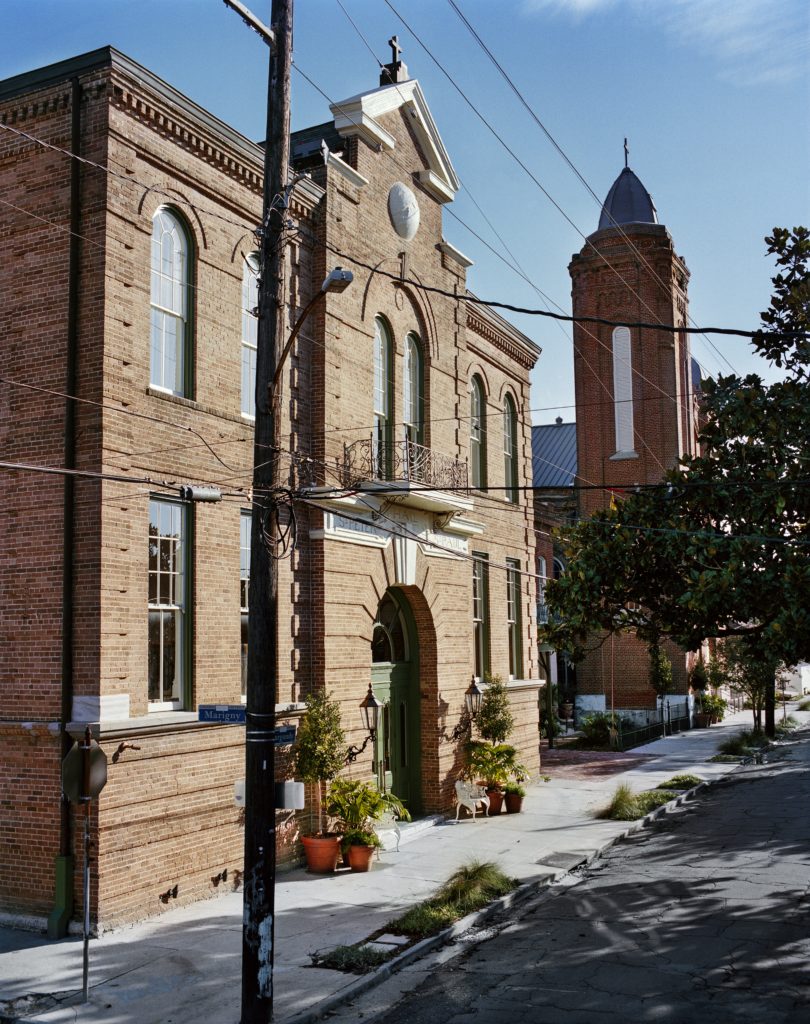
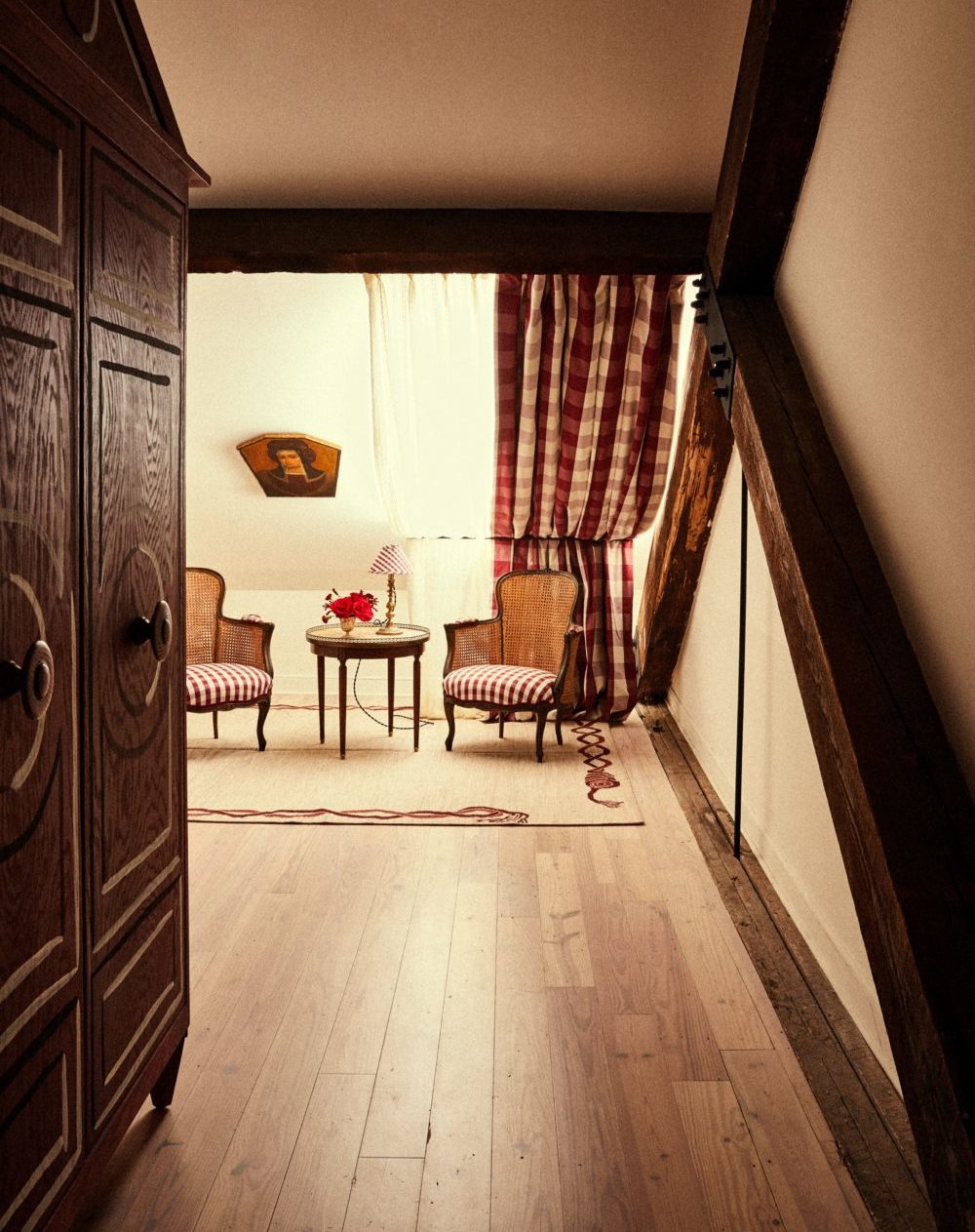
Photos courtesy Hotel Peter & Paul
With the church, rectory, convent and school built in different years with different materials, the condition of each structure also varied. “You expect to find termite damage or water damage, but you don’t expect to find a place without a foundation,” said Ashe, describing the surprise of discovering that two spots in the rectory were missing this vital element. “We had to support those pieces and retroactively install a foundation.”
Another puzzle was presented on the school’s third floor, which had been an open gymnasium with a stage. To make the space more usable, ASH NYC designers worked with studioWTA to create guest rooms in the space, painting a mural across the front of the stage to make it appear part of a theater backdrop. Now guests could be forgiven for murmuring Shakespeare as they find their rooms: “All the world’s a stage, and all the men and women merely players.”
The backdrop, too, has a backstory. The design, painted by New Orleans decorative-finish artist Ann Marie Auricchio, is based on a play, “A Celebrated Case,” which was performed at the school when it first opened, according to Auricchio’s research.
“This was a play popular during the late 19th century/early 20th century,” Auricchio said in her notes to the developers. “There is very little information to be found on the production. However, I was able to find some images of the original stage production in 1878.”
Many other playful design elements are peppered throughout the hotel, including trompe l’oeil-painted armoires in the guest rooms and a profusion of gingham fabric throughout the property. While the design theme is an intriguing blend of French country manor with Swedish Gustavian minimalism, there are winks and nods to local imagery. The back of the Elysian Bar, for example, is a sculptural element evocative of the bell-shaped trunks of cypress trees — but rendered upside down and made by a local Mardi Gras float maker.
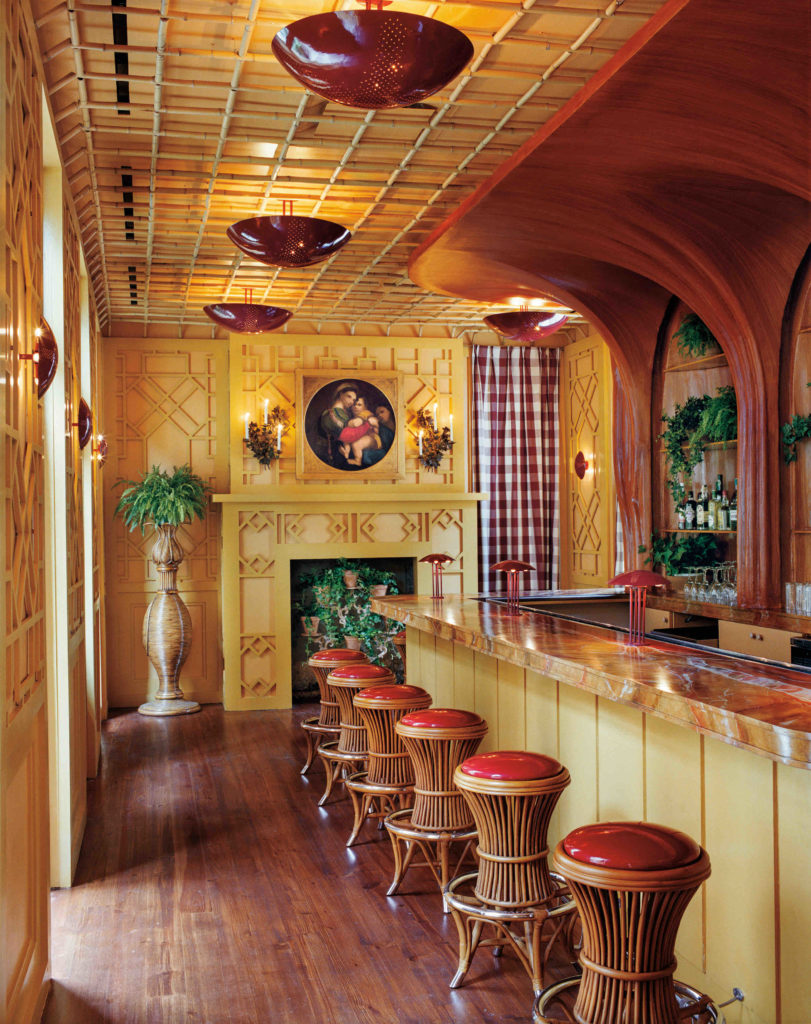
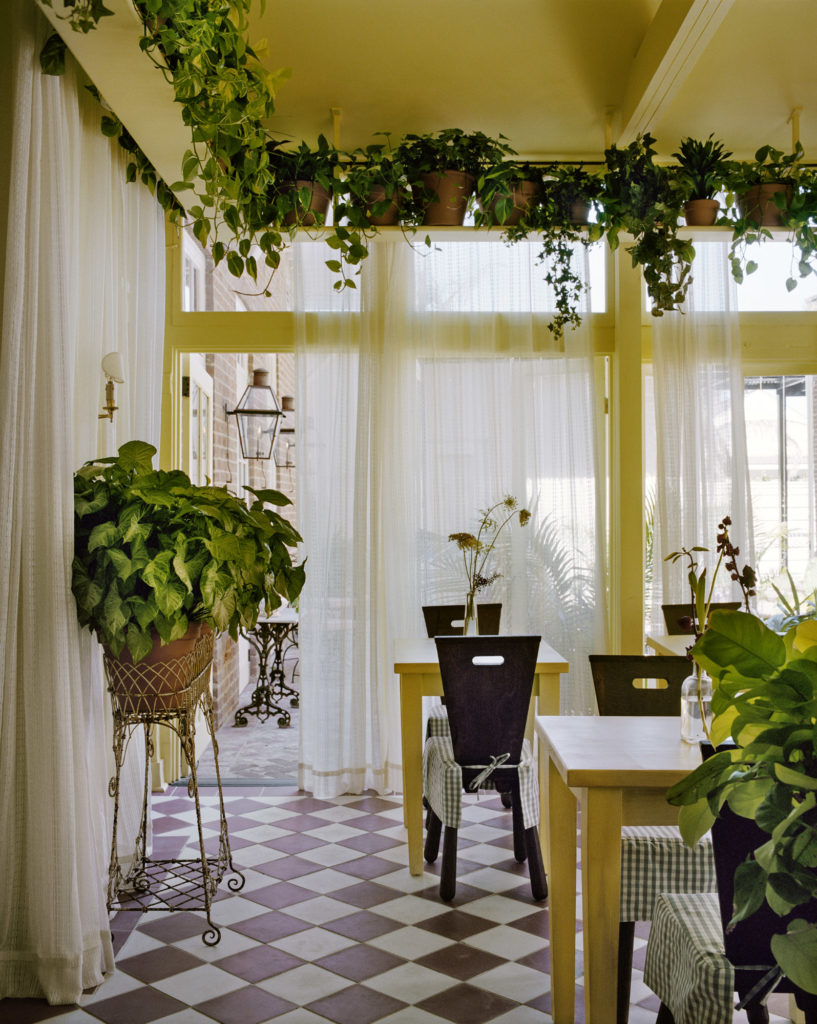
Photos courtesy Hotel Peter & Paul
During buying trips to Europe, the developers found more than 700 antiques for the hotel, but many other furnishings were produced in New Orleans, including the guest room armoires made by Chip Martinson of Monkey Wid-A-Fez woodworking shop; the ceramic door numbers by Ivy Mabius, and the window treatments by Cathie Joffary and Brandon Wilkins.
In the school building, the hotel’s front desk is nestled under a tent-like structure, but the nearby cypress double staircases are the showstoppers of the space. The developers found the original architectural renderings and recreated the staircase railings, which had been replaced with iron.
Standing at the foot of the staircase can be a Tardis trip back to the building’s school days. When local writer John Pope toured the property with Jordi before it opened, he marveled at the space. “I can almost hear the children,” he recalled telling her.
The voices of Sts. Peter & Paul’s former parishioners, students and teachers are still present. The hotel’s website has links to oral histories and video remembrances about the church and school.
“One of the most interesting aspects was the ex-religious component of the whole thing,” Cooper said. “We were reinhabiting a hallowed space that has such memories. We had to respect that.”
Photos courtesy of Hotel Peter & Paul
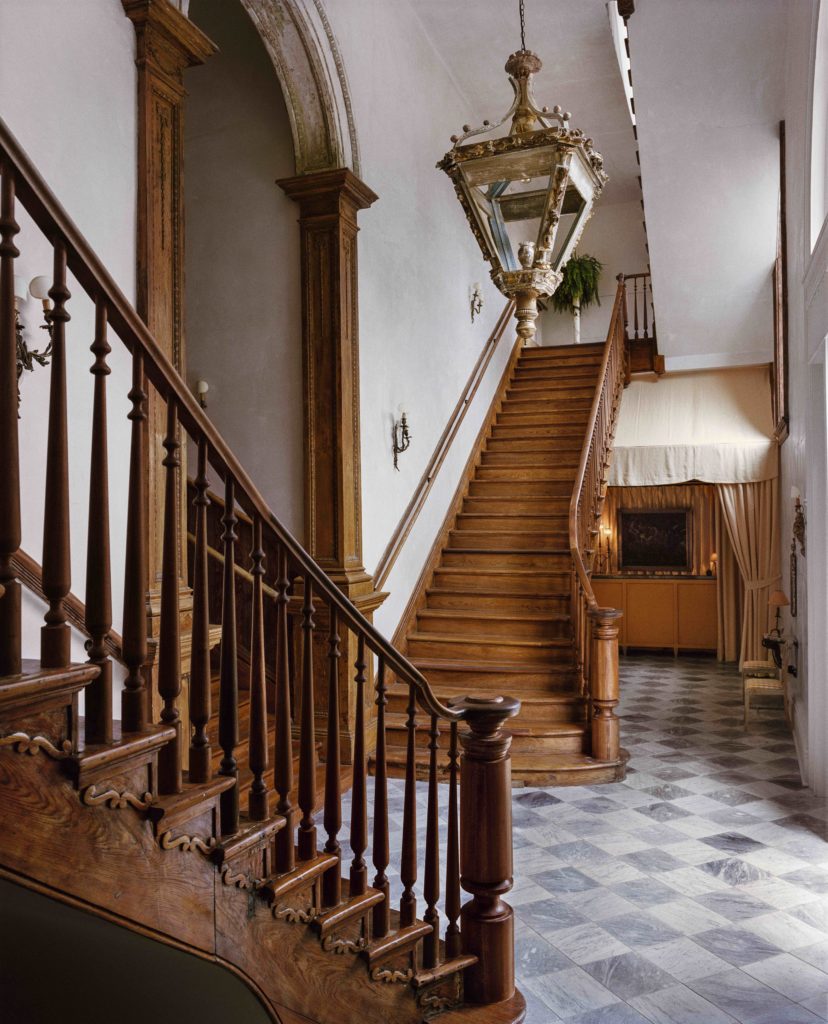
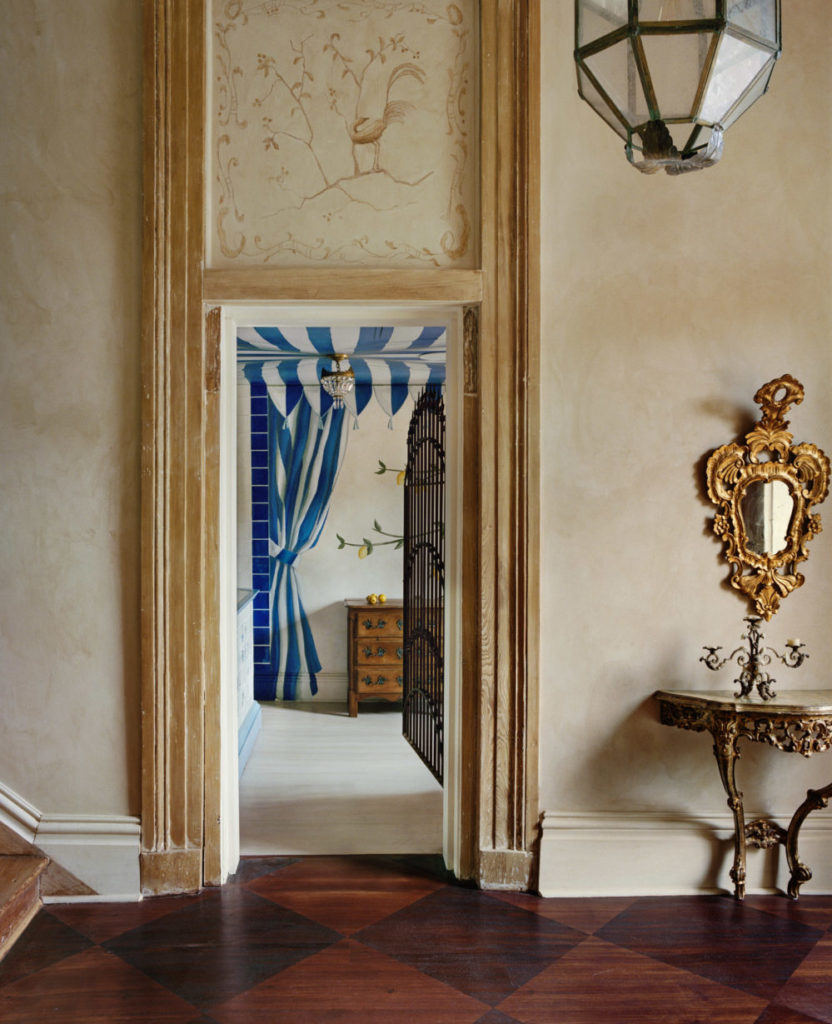
Advertisements




